What Do All of the Adobe Programs Do?

Ever wondered what all of the Adobe products do? This guide will help you out with the 16 programs found in its Creative Suite.
Update: Since this article was originally written, new versions of the software have come out. Some has been dropped — Flash, for example. Still, this will give you a good idea of what each of the Adobe apps does.
Adobe creates a lot of programs, many of which I found myself unfamiliar with until recently. Most people know about Flash, Photoshop, and Adobe Reader. But those aren’t the only programs Adobe develops. In the past, it was a fairly large investment to buy the suite however in recent years, Adobe has lumped all its products together into its Creative Cloud platform with subscription plans ranging from $9.99/mo to $49.99/mo. A great option for those of us on a budget.
What Do Adobe Programs Do?
Here’s a quick guide to understanding each of Adobe’s software programs.
In the 6th iteration of the Adobe Creative Suite (that’s where the “CS” comes from), there are 16 programs. In addition to the Creative Suite, there are several other suites and enterprise products. For time’s sake, I’ll just focus on the primary 16.
- Photoshop® CS6 Extended
- Illustrator® CS6
- InDesign® CS6
- Acrobat® X Pro
- Flash® Professional CS6
- Flash Builder® 4.6 Premium Edition
- Dreamweaver® CS6
- Fireworks® CS6
- Adobe Premiere® Pro CS6
- After Effects® CS6
- Adobe Audition® CS6
- SpeedGrade™ CS6
- Prelude™ CS6
- Encore® CS6
- Bridge CS6
- Media Encoder CS6
What is Adobe InDesign?
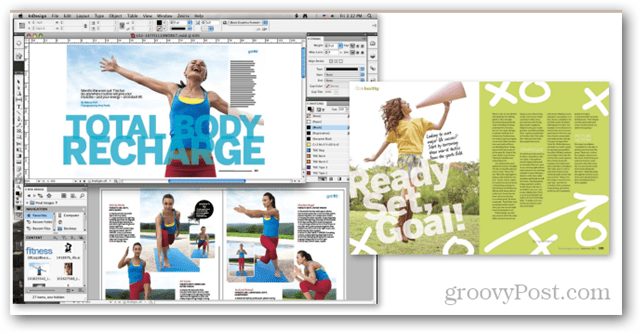

InDesign does page layouts. It allows you to produce and preview documents for magazines, both in print and online across mobile and desktop platforms. It offers more precision with typography than Photoshop, but less in the graphics department. InDesign is made for publishing. Ideally, projects rendered are newspapers, posters, and other marketing materials. The way InDesign works allow content producers to quickly piece together the layouts for multipage magazines and documents. InDesign operates seamlessly with the rest of the Adobe suite, to enhance creative ability. The latest version incorporates interactive HTML within documents to allow web publishing.
Overall, if you need to create a layout for something with a lot of text and graphics, InDesign is just about the best software out there for it.
What is Adobe Illustrator?
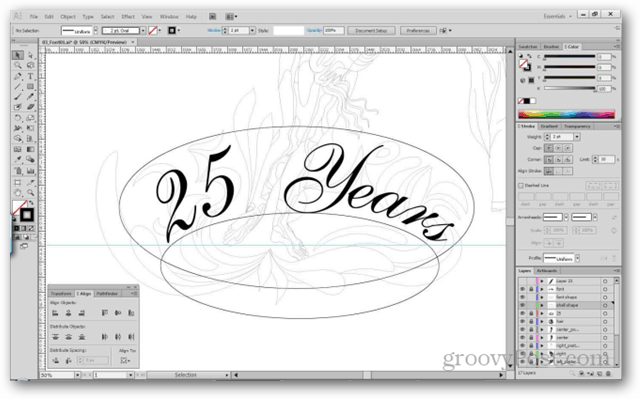

Illustrator is the Photoshop of vector art, also known as resolution-independent graphics. By comparison, Photoshop is used to create raster art, also called bitmap graphics.
Raster vs. Vector
The fundamental difference between the two is that the vector has less detail but can be resized larger infinitely without loss of quality. Vector is also comprised of lines, curves, and geometric data. In contrast, raster graphics are composed of individual pixels. Illustrator is typically used to create logos and graphics for business cards, infographics, clipart, and icons. Because vectors are not size dependent, a design could be used on a small card but then scaled to the size of a billboard without a loss in quality. Another thing to note is that the vector can easily be converted to raster, but it is a one-way transfer as the raster cannot be converted back without difficulty.
What is Adobe Bridge?


Bridge handles asset management. Or in other words, it is an organizer for photos and designs within the Adobe Creative Suite. It also comes with the standalone version of Photoshop. Bridge is used for batch file utility functions, such as renaming files or editing other metadata on the raw camera IPTC and XMP levels.
Bridge isn’t necessarily a program used for creating or making visual edits to the actual content. Rather, think of it as a handy assistant for all other Adobe software.
What is Adobe Dreamweaver?


The way I explain Dreamweaver to most of my friends is that it is a graphical version of Notepad++. It highlights syntax and shows you a rough preview of what your code will look like at the same time. Many of its tools automatically generate the necessary code when using the visual side of the program. There isn’t much else to it, except that it integrates with the rest of the Adobe suite and supports the following languages:
- ActionScript, ASP, C#, CSS, ColdFusion, EDML, XHTML, XML, XSLT, HTML, Java, JavaScript, PHP, VB, VBScript, and WML
What is Adobe Fireworks?

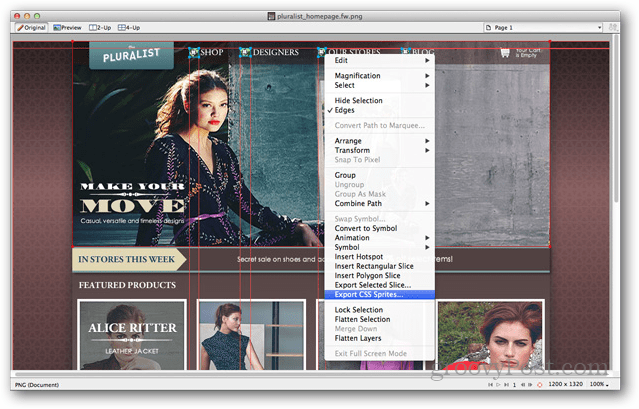
Fireworks is a fascinating creature. Like Illustrator, it works primarily with vector graphics with some marginal bitmap editing available. But, Fireworks is oriented for web and mobile application development. Fireworks can make just about any graphics interactive, and it allows you to create both wireframes and object behaviors. With that said, it is geared more towards developers and less towards artists. But, there are examples of artists who use Fireworks almost exclusively, such as The Oatmeal webcomics. And artist Jose Rivera uses Fireworks almost exclusively for all of his work found here.
Overall it is a useful program to have in any graphic artist’s arsenal. Even though it lacks some of the vector editing capabilities of Illustrator, Fireworks can create brilliant user interfaces, websites, and interactive websites in a vector or bitmap format.
What is Adobe Prelude?

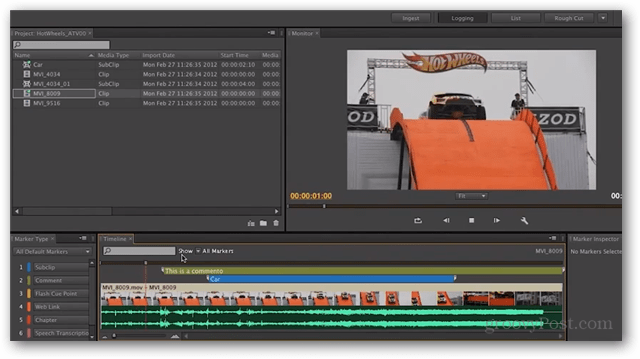
Prelude is a video tool for the cut-and-edit guy before sending off the footage to the production team. If you have hours of footage to go through, it will take forever to do it in Premier. That is where Prelude comes in to save the day. Prelude can log videos, tag, transcode, and search through footage quickly. If there’s a particular scene or shot that you need to find, Prelude can find it almost instantly. Prelude isn’t for editing; it is for screening clips and organizing them.
What is Adobe After Effects?

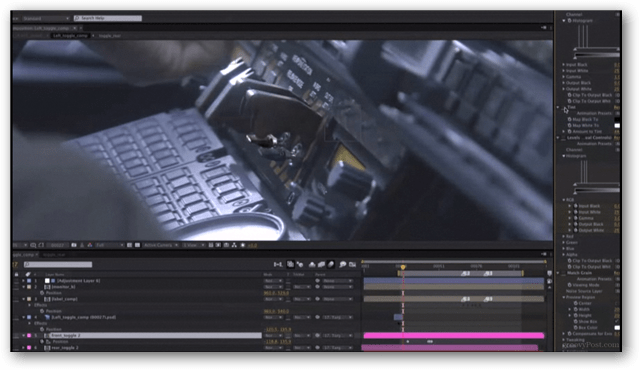
After Effects has been the leading program in the video compositing industry since the ’90s. It is used for adding visual effects to videos or animations. After Effects can also be used to create animations of both text and complex characters. Other things like adding clips into a clip or overlaying green screens come with ease. A quick run-through of YouTube will show kids using After Effects how to add lightning strikes, glowing eyes, and lightsabers to their videos.
After Effects packs some of the most powerful editing tools available for video, such as the Rotobrush which lets you automatically paint a character out of any background you choose in minutes vs. hours of manual frame-by-frame editing. All of these features make this program specifically hardware intensive, so be sure to have at least 8GB of ram and a ton of CPU power before trying to use it.
After Effects can do a lot, and even though it is easily overshadowed by programs like Flame and Smoke Advanced, it won’t burn a $60,000 hole in your pocket like the latter.
What is Adobe Premiere Pro?

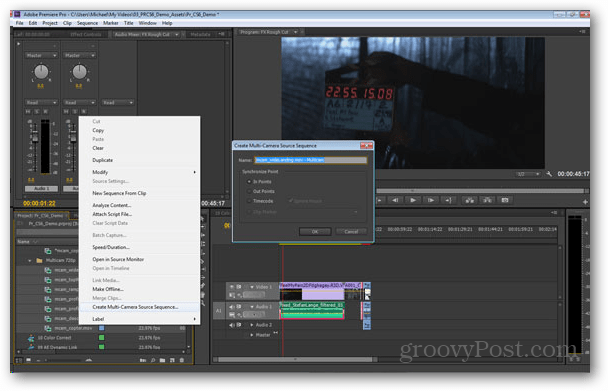
Premiere Pro is used to edit and cut video tracks, and then export them in the desired format. The project panel allows you to grab individual clips and add them to a timeline to create a movie. Titles can be added, elements from the rest of the Adobe suite can be added, and color corrections can be applied. It wasn’t until recently that Premiere started to receive a lot of attention. It was with version CS5.5 that the Mercury Playback Engine was refined, which allowed faster performance that takes advantage of GPU acceleration and multi-core processors.
Until recently Adobe Premiere Pro has failed to make much of an impression on a broadcast market dominated by Avid and Apple. In all honestly, older versions weren’t that great. But, that all changed with the introduction of the Mercury Playback Engine, and Adobe Premiere Pro CS6 takes the app up to the next level. Now it is used by professionals throughout the video editing industry.
What is Adobe Photoshop?


Photoshop is the go-to image editing and manipulation software used by almost everyone in the industry. Photoshop excels in working with raster (bitmap) graphics and is capable of producing highly detailed compositions. While originally intended to be a photo manipulation program, Photoshop has been taken up by digital painters and design professionals in both the classroom and workplace.
Recent versions have brought in functionality for working with 3D designs, though the program still primarily garnishes the most respect for its photo manipulation and post-production ability.
What is Adobe Flash?


Flash is dead. If you still have it on your computer read one or both of the following articles:
How to Remove Flash from Your Mac
How to Remove Flash from Your Windows PC
-
You know those funny animations and web games you play on Facebook and other sites? Many of them were designed using Flash. Flash can be used to create a cartoon, comic, interactive interface, or even a game. Although since the introduction of HTML5, it has been losing support, Flash is still currently used everywhere on the web. In particular, Flash has recently been used to create a multitude of media players – such as the default video player run by YouTube.
What is Adobe Audition?


Audition is the sound room. Useful for editing audio, it can be used to edit and mix sounds or fine-tune and re-master soundtracks. Historically, it was often used by radio stations for cutting and adding sound effects.
What is Adobe SpeedGrade?


SpeedGrade is for color grading images. At first glance, this doesn’t sound like much. But, correctly applied color can add depth, emotion, and character to a picture and videos. When it comes to color grading, there isn’t much to talk about, but rather an example serves best, so check out the images below.
In the image above, color grading was applied using multiple layers and a separate mask for the sky. These brought out the warmth in the terrain, and coolness in the sky.
What is Adobe Encore?


Encore is a DVD and Blu-ray disc authoring package for professional producers that comes as part of Adobe Premiere. Encore can create DVD menus that can be edited in Photoshop using layers. Encore can also produce video in multiple formats, regardless of the original.
What is Adobe Flash Builder?


Flash Builder is based on Eclipse to create a development environment that increases efficiency in deployment for mobile and desktop web applications. Primarily it is functional for creating rich internet applications across multiple platforms, but mainly Flash. The code can be modified using a graphical interface or in plain MXML and ActionScript.
What is Adobe Acrobat X Pro?


Acrobat X is used for creating robust PDF files. It lets you set backgrounds, foregrounds, and isolate or resize individual pages. It even goes as far as to allow you to add video, audio, and interactivity to PDF documents.
What is Adobe Media Encoder?


Media Encoder lets you save media for almost any screen or device. It supports multiple formats, including FLV, F4vV, and H.264. Media can simultaneously be saved in multiple outputs for optimal playback on a variety of resolutions and devices. Cue points can be added to playback to trigger presentation-specific actions. Video can also be resized or cropped within Media Encoder. Metadata editing is supported in the most recent version and will pass information to the rest of the Adobe suite.
Images Courtesy of Adobe.
27 Comments
Leave a Reply
Leave a Reply




james dean
October 3, 2012 at 11:57 pm
Great article Austin, I never knew what some of these programs were used for. Which ones do you use the most?
Austin Krause
October 6, 2012 at 6:09 am
I’ve been into Photoshop since the 90’s. I use it at least a few times every week for complex graphic design.
I also like Fireworks for throwing together quick web interfaces, but most of my web work is done in Notepad++ unless I’m building something big from scratch.
Steve Krause
October 6, 2012 at 9:32 am
Wordpress for the win when it comes to building some www
Sent from my Mobile
lol
December 28, 2014 at 4:35 am
lol
Steve Krause
October 6, 2012 at 9:32 am
Personally, I use photoshop the most. And reader. :)
Moajjem Hossain
February 12, 2016 at 8:30 pm
I’m fond of Adobe Illustrator. :) And you?
mbk28
October 21, 2012 at 1:34 am
I use most of them, it will be more easy to say witch one I don’t use ;)
anonymous
October 21, 2012 at 1:46 am
Why is there a picture of photoshop at flash?
Blurry Face
February 17, 2016 at 11:24 am
GOOD EYE!! Thankyou! What the BLEEP??! Lol, just kidding! I’m sure it’s just a mistake. In the paragraph that first explains about Adobe FLASH, there’s a photo/graphic of a computer screen with a program open (look closely). You’d think it’d be Adode Flash to show us what it looks like, correct? NOPE! It’s Adobe PHOTOSHOP CS6…hmmmm strange?? YES, that should be changed.
ydkwia
March 8, 2014 at 3:57 pm
good article. cleared up a few things for me. thanks!
sharpshot
April 17, 2014 at 9:46 am
Great article. Will you being doing an update to include the apps that have been dropped and added and how creative suite has changed them?
Victoria Quade
September 1, 2014 at 2:57 pm
Short, sweet and informative. Just what I needed to give me an overview without any hype.
John
February 7, 2015 at 7:37 am
As Victoria said, “Short, sweet and informative”. I’ve been racking my brain trying to learn many Adobe programs, and while their tutorials are great I really just needed a “cheat sheet” like this to put programs and their main functions into layman’s terms. THANK YOU!
Lauren
August 18, 2015 at 9:25 am
Thanks! This was super helpful!
Tom
September 5, 2015 at 7:17 am
Great article Austin, I am teaching a multimedia class for the first time this year and I am just trying to figure out what programs to cover in the course. This helped a lot. Thank you.
Angela
October 30, 2015 at 9:13 pm
Austin,
I’m trying to build a How to sort of document. I’m wondering if Indesign might be best or possibly Adobe Acrobat X Pro, which I haven’t used yet, but it’s peaked my interest. My other option is building a member only site with links to each document.
So the bases is a check list for authors that cover step for how the publishing process works, how to market their book, how to do PR, etc. Each check out item would link them to a step by step document of what they needed to do to be able to check that item off their list. I have some webinars, slide video, pdf documents, word documents, etc. basically this has been pieced together over the years by different people in the organization, and instead of sending each author the documents separately, I want to combine and clean up things into an easy to follow academy of sorts.
My concern is some of these authors aren’t going to have Adobe software other than your typical reader etc. So I need to make sure they will be able to open it and use it easily without having to have any special software.
Indesign I know I can pdf the final project but the webinars and slide videos would have to be converted to print layouts.
What program do you think would work best for what I’m wanting and allow them to use it easily?
Jeremy
November 14, 2015 at 2:48 pm
Austin,
Thanks for the summary. I just got the suite and needed an explanation of what all the programs did.
Amb Bitrus Lawrence
January 20, 2016 at 1:41 am
Wow! This post makes a lot of sense to me. I always ask myself which program chew before the other cause there’s just too many of them. At last I now know which to chew before the other after seeing this post. Thanks alot.
Laura
February 11, 2016 at 8:23 am
Great summary of the Adobe products.
Phil
February 27, 2016 at 3:18 pm
Very helpful thank you, you saved me and my hard drive a load of time thank you A
Phil
Bassman719
April 12, 2017 at 3:33 pm
Great article!
I work in the film industry and use Photoshop, Illustrator and Acrobat extensively everyday. They work beautifully together and so I recently signed up for the CC Creative Suite. Was curious to know the functions of some of the other programs as the more i’ve learned about Photoshop and Illustrator, the more I know they have specific uses that are best suited to different aspects of your workflow.
I can already see that i’ll be able to use InDesign, AfterEffects and possibly Fireworks in the very near future with an eye for Premiere and Audition down the road.
Thanks for all the awesome information!
Deana
May 16, 2017 at 8:17 pm
GREAT article! Thanks so much for the brief explanations. I’ve been searching all over trying to wade through all the Adobe programs. This will help me decide what to sign up for in the cloud, which I hate the thought of renting and at their mercy to continue debugging new versions. I appreciate this help!
Caitin
October 20, 2017 at 10:20 am
Is there such thing as Adobe Writer? My friend recommended downloading this to be able to complete government forms but I can’t seem to find where to download it. Please let me know
Rajesh
June 11, 2018 at 11:00 am
Austin, thanks for informative article that helped to demystify the Adobe product portfolio from which I used to know about PDF/Photoshop only ;-)
DoskiOrignale
April 9, 2019 at 1:58 am
This article is the most informative guide I have read on about what actually are creative cloud apps.
You are doing a great job. Thanks very much
somya
June 26, 2019 at 7:17 pm
I guess this is the best thing I could ever read about adobe products ..so thank u ..this is really helpful
Andrew Allan
May 13, 2020 at 3:21 am
Early in my career as a marketing copywriter and layout artist, I purchased a tool. It was an amazing new tool that would allow me to create designs and page layouts inside my computer, rather than having to order typesetting or use a drafting table and tedious pre-press processes. This TOOL was a software graphics program from a new company called Adobe. It was a very expensive product, but I saw it as a good INVESTMENT.
Eventually the Adobe company offered ADDITIONAL graphics software products, some of which I also PURCHASED.
As years passed, the Adobe company offered upgrades to their graphics software products that I had purchased earlier. Some of those upgrades I purchased and others I did not because they offered no real value to me. Every time that I DID purchase the upgrade, I had to PROVE to the Adobe company that I was indeed the OWNER of the particular Adobe graphics software product being upgraded. Over the years I spent thousands of dollars on upgrades to the Adobe company’s graphics software products. But each time seemed like a good INVESTMENT because it gave me an advantage over competitors.
Then the Adobe company started bundling these graphics software products in very expensive SETS. I PURCHASED an upgrade to Adobe company’s 5-DVD CS3 set of graphics software products, which included Adobe InDesign, Adobe Illustrator, Adobe Photoshop, Adobe Distiller 8, Adobe Acrobat 8 Professional, Adobe Dreamweaver, Adobe Flash, and other programs.
Then the Adobe company announced it would offer ONLINE SUBSCRIPTIONS to the same software. No expensive software to buy, you could just rent it the most current version. Very convenient. The downside is that it’s very expensive, making users pay every year for the right to use the same type of software that I paid dearly to own. “Stupid rich guys, I thought.”
Eventually I was satisfied with the editions of software I had PURCHASED from Adobe company, and not interested in upgrades, so Adobe was no longer making money off me.
While my Adobe company software worked great, Adobe would only back that software if it was used on operating systems for which it was designed. My purchasing of a new computer was the usual reason I bought upgrades. But usually the old version of software would work on newer operating systems, if not perfectly, and that was fine for me. Then came the day I had to re-load Illustrator because it failed in my initial installation of the CS3 set. It became clear I would have to UNINSTALL my entire CS3 set and reinstall the whole thing. Voila – it worked! Now here’s the part where rubes like us lose; ACTIVATION.
See, when I bought that expensive software and upgrades time after time for years, I had to first install it in my computer and then ask Adobe to ACTIVATE it. Sounds like somebody waving a magic wand, right? But actually it’s just the company ensuring that it’s legimate software that has been properly purchased with the right amount of money going to the Adobe company. That assured, they essentially flip a switch and your software comes to life.
Not this time. My efforts to reactivate the Illustrator program — and every other program in my CS3 set — failed. Every program for which I had spent thousands of dollars buying and upgrading over the years were no longer accessible. Adobe’s explanation, “the activation servers have been disconnected.”
But remember, I had to prove I owned the software every time I got an upgrade, so they already had the proof.
Their explanation is “the activation servers for that software on that operating system have been deactivated” or something like that. It sounds very technical but it is essentially something like an old crumudgeon standing in his door and saying “Yes, you bought the software, but I have the key.”
That being said, I still love the software, but I hate the company.